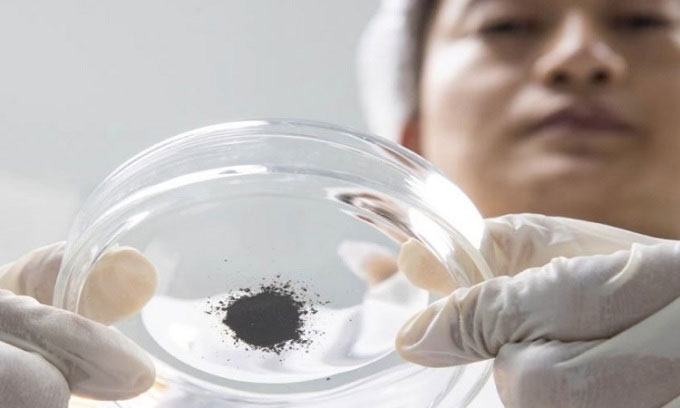A mobile device weighing approximately 5 kg utilizes lunar soil, water, and solar energy to convert carbon dioxide (CO2) into oxygen and fuel.

Scientists are studying lunar soil samples to develop life support systems. (Photo: Xinhua)
Researchers have indicated that the artificial photosynthesis process uses lunar soil as a catalyst. They aim to test the system in space, likely during missions to the Tiangong space station and crewed missions to the Moon. “Based on this system, we can develop life support systems for exploration, research, and mobility on the Moon,” the research team shared in an article published in the journal Joule on May 5.
The research team includes scientists from Nanning University, the Chinese University of Hong Kong, Shenzhen, the China Academy of Space Technology, the University of Science and Technology of China, and the University of Science and Technology of Macau. Their conclusions are based on the analysis of lunar samples brought back by the Chang’e 5 mission in December 2020. This mission returned 1.7 kg of lunar soil and rocks, with 2.6% allocated to research institutes for analysis, according to the China National Space Administration.
Yao Yingfang, the lead researcher from the School of Engineering and Applied Science at Nanning University, shared that the team received one gram of lunar sample for the project aimed at developing ways to utilize space resources to support exploration. This allows the crew to minimize supplies from Earth, making the payload on rockets lighter and reducing fuel requirements.
According to Yao, the 5 kg prototype uses a catalyst that simulates lunar soil to electrolyze water sourced from the lunar soil and exhaled by astronauts. On Earth, the system can filter 20 grams of water from lunar soil every hour and convert half of that water into hydrogen and oxygen, while the other half can be used as drinking water. A study by the Chinese Academy of Sciences published in January this year found that lunar soil contains about 120 grams of water per ton. In addition to oxygen, the process can also produce hydrogen and methane, which can be used as fuel and methanol, commonly used as a solvent. Yao mentioned that the next step is to test the system on the Moon, to expose it to sunlight and temperature fluctuations ranging from -173 degrees Celsius to 127 degrees Celsius.


















































